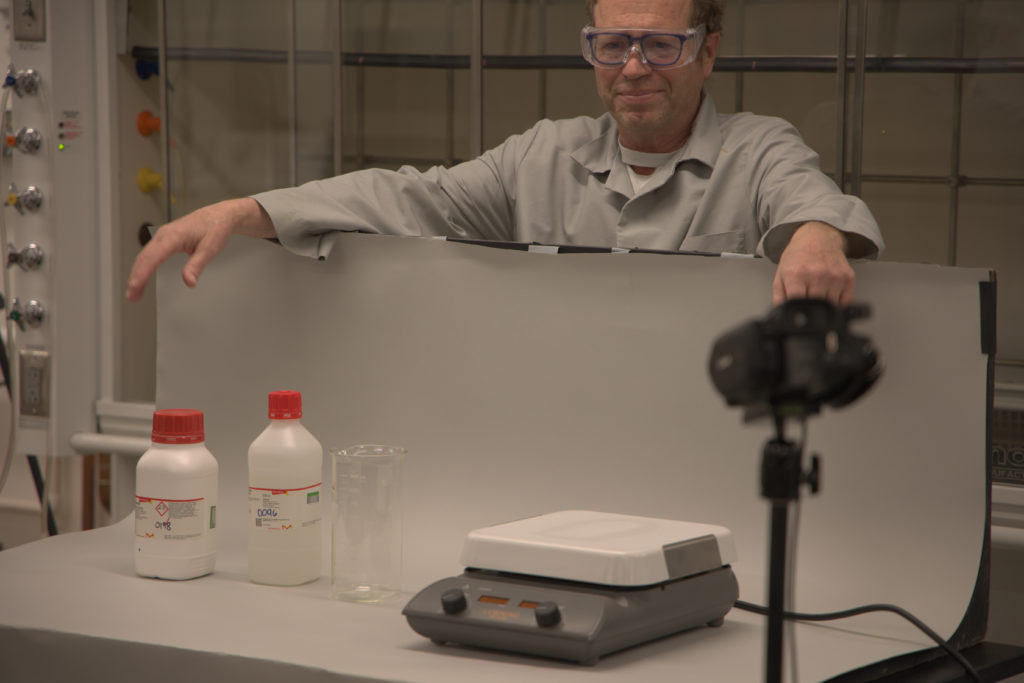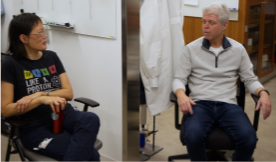UW–Madison chemistry experts scrutinize the science behind one of television’s most sensational shows
Breaking Bad, a hit crime drama about a chemistry-teacher-turned-meth-cook, is widely praised for the intricate use of chemistry throughout the series. While critics argue that this chemistry is inaccurate or overexaggerated, UW–Madison chemists argue Breaking Bad leaves little room for error when it comes to scientific accuracy.
Airing from 2008-2013, Breaking Bad presents the story of Walter White, a chemistry teacher who uses his extensive academic background to develop methamphetamine and avoid conflicts with law enforcement.
In the show, White is known for producing extremely pure blue methamphetamine. Yet Dr. Paul Hooker, a chemistry lecturer at UW–Madison, claims that, while the blue meth is a memorable plot point of Breaking Bad, any sort of discoloration would indicate high levels of impurity. Hooker further explains that actual drug dealers and users aren’t concerned with the purity of their meth — debunking another major narrative of the show.
Dr. Agnes Lee, a UW–Madison chemistry lecturer who previously worked at the Madison Crime Laboratory, corroborates this point. “Even if a sample was synthesized with 90% purity, it would still get cut with other ingredients,” she says.
Fun Fact: UW–Madison makes a cameo in the Breaking Bad episode “Granite State” when a background TV features a hockey game between UW–Madison and Denver University!
Lee shares that in her experience, dealers would actually mix their meth with other similar-looking substances, like sugar or caffeine, in order to dilute their supply and make more money.
Another chemical inaccuracy Breaking Bad depicts is the body dissolving process White frequently uses to dispose of bodies and evade law enforcement. In the show, White and his partners use hydrofluoric acid to do so — but this approach is flawed.
“Hydrofluoric acid is actually a very weak acid,” says Lee. “So, while it is corrosive, it wouldn’t work so well to dissolve a body.”
Despite its inaccuracies, Hooker and Lee still approve of Breaking Bad’s scientific depictions. This sentiment is shared by Jim Maynard, an Emmy-nominated chemistry demonstrator at UW–Madison.
“I felt like they did a pretty good job with the science, for the most part,” says Maynard. “On-screen chemistry often isn’t very accurate, but what I reviewed from Breaking Bad I found to be much more accurate than the average show.”
To Maynard, it’s clear that Breaking Bad’s producers cared about the science behind the show, holding in-depth consultations with chemistry experts.
Hooker appreciates how Breaking Bad’s producers have White approach every issue from a chemist’s perspective. In one of Hooker’s favorite episodes, “A No-Rough-Stuff-Type Deal,” White concocts a plan to break into a building by melting the lock with a thermite reaction.
“All they had to do was break through a door, and there are better ways to do that. A thermite reaction is what a chemist would do, whereas other people would just use a sledgehammer,” explains Hooker.

Aside from the chemistry, Hooker and Lee also admire the show’s overall storyline. To Hooker, the series “broke a lot of new ground for a drama,” being that there wasn’t always a happy ending — or even a ‘good guy’ to root for.
“I think the writers and director really knew how to mess with your emotions, and that’s what made the show a landmark in television,” he states.
Lee’s favorite part of the series occurs in the very first episode. “The first thing [White] said about chemistry is that ‘chemistry is the study of change,’ and that’s when I was hooked,” Lee recalls.“Change” seems to be a common theme throughout the show — between the chemical reactions, character transformations, and White’s moral deterioration, very little remains the same from the first episode to the last. However, one thing seems to persist: Breaking Bad is one of the most scientifically accurate — and widely adored — television series, admired by audiences and chemists alike.

